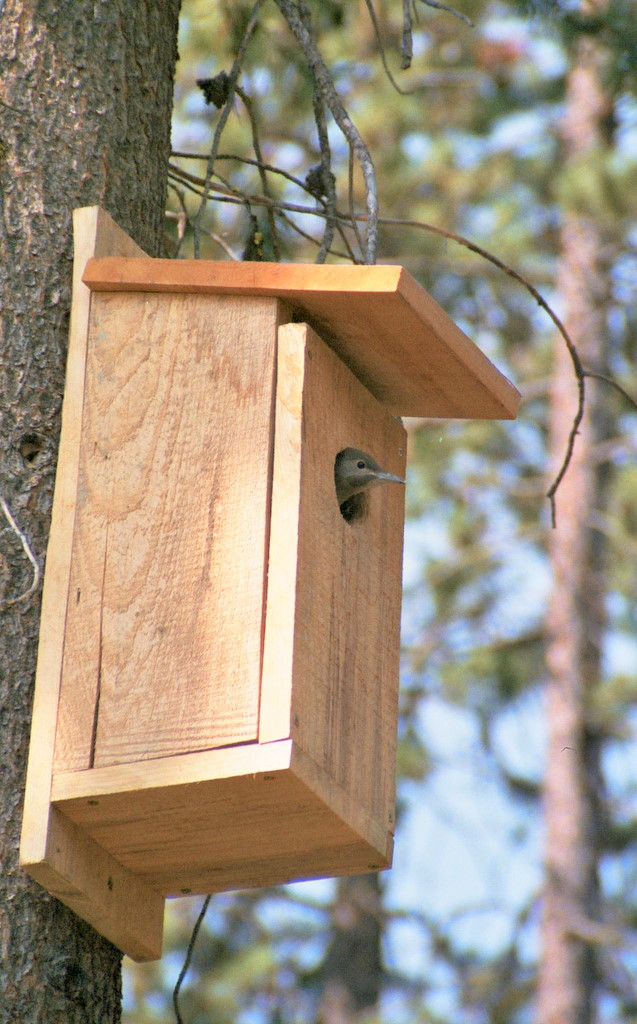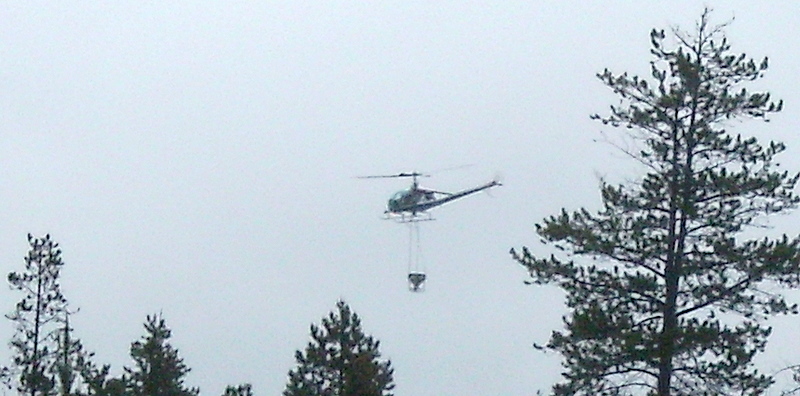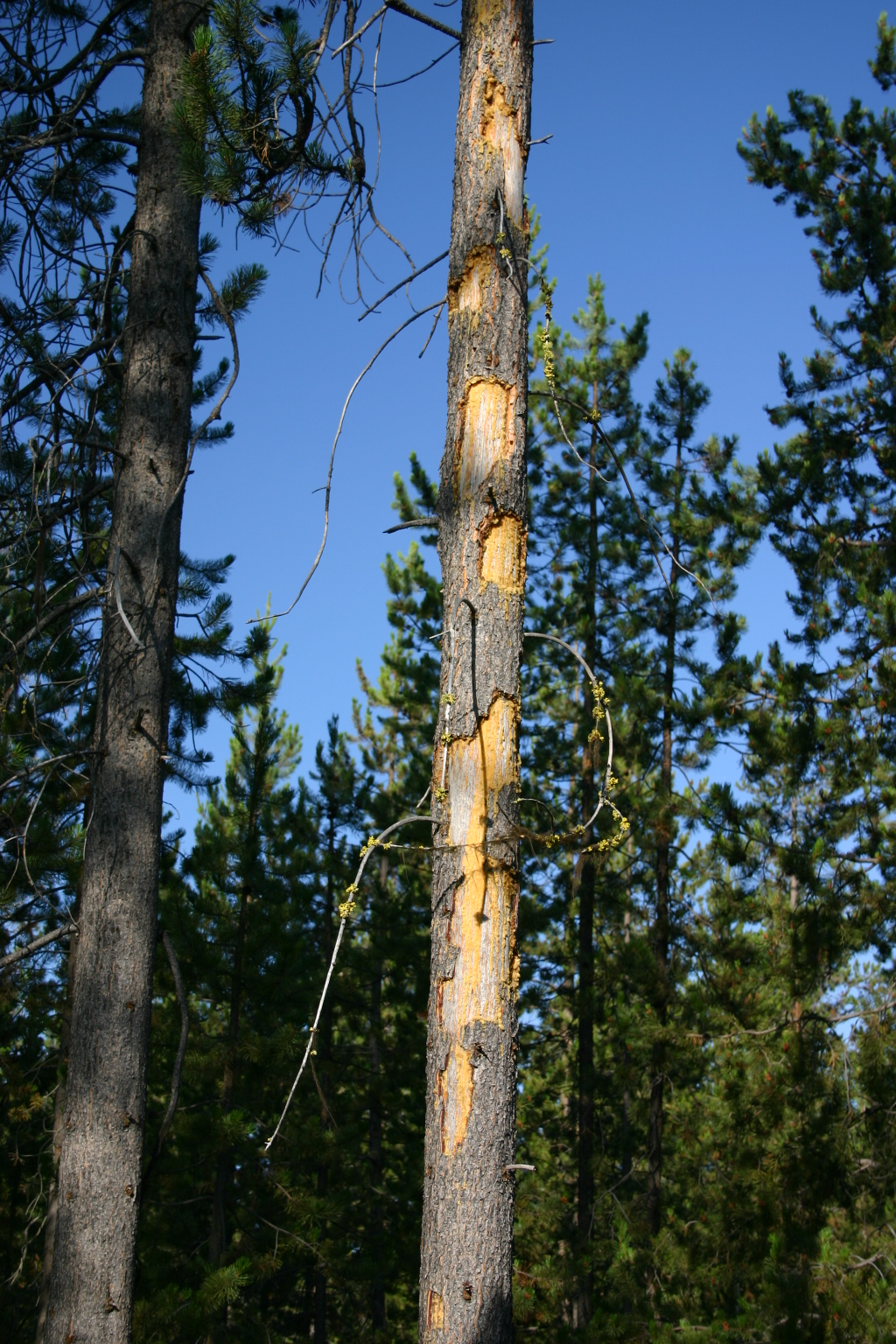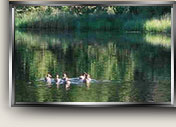Wildlife Management
Wildlife enhances human enjoyment of
the ranch. The animals are fun to watch and they assure us we
have partly escaped gray pavements and are surrounded by nature.
The animals largely take care of themselves and the ranch invests
relatively little in wildlife management. Nonetheless, not all
animals are beneficial. We want to encourage some animals
(elk, most birds) and control some others (e.g. gophers, tree frogs,
sage rats, mosquitoes). This section addresses selected animals on the
ranch, describes their impact, and presents actions the ranch now
takes or could take for each one.
For photos of
wildlife taken on the ranch, see the
Wildlife web page and the
Wildlife Gallery. For a discussion of fish in the Little Deschutes
see
Trout in the Riparian section of this Stewardship Plan.
History
Species have come
and gone on the ranch over time. Although quail are very common now
on the ranch and throughout Central Oregon, there were no quail on
the ranch when Claude and Grace Vandevert were growing up here in
the 1930’s. Quail have been widely (and successfully) transplanted
by humans throughout Oregon. The cessation of grazing and the
expansion of willows in the ranch riparian areas have been favorable
to quail. Perhaps these changes also explain why the rabbits seen on the ranch today were nowhere to be found in the 1930's and 40's.
There are no bear
on the ranch or anywhere near it today. But it is likely there were
bear here before permanent settlement began and William Vandevert,
well-known bear hunter, arrived.
Claude Vandevert
reports, “There were no beaver until maybe the middle 30's when a
very few began to show up. Then occasionally we would see a beaver
house but never dams; the river was too big for them to try that.
There were a lot of muskrats and mink and Dad did a lot of trapping
for them to make an income. But these too, began to disappear. The
muskrats fed on the fresh water mussels and finally ate them all and
left.” Any muskrat resurgence would first appear in the sloughs and
backwaters but there are no signs of muskrat on the ranch at this
time. There are very few mink but a big dark
male does live near the bridge.
Favored Animals
Elk - Elk make the
ranch seem closer to the wilderness and they help keep the grass in
the pasture and forests green and vigorous by grazing it. Elk are a
negative for our neighbor, Crosswater, because they tear up the
greens on the golf course with their hooves. A side benefit of our
thinning the forest is providing more grass for elk. The ranch will
leave a few quarter acre patches of un-thinned forest where elk (and deer) like to bed down.
Ducks – The ranch
has successfully encouraged wood ducks by building nine duck boxes
for their nests. Other ducks also use the boxes while some prefer
to nest on the ground near the pond. The ranch cleans out the
boxes in mid-March and the ducks use them in March and April.
Bluebirds – The
ranch and some homeowners have installed about a dozen bird boxes
for nesting bluebirds. Swallows also use them and some flickers use
them after they have enlarged the entry hole. Birds would probably
make use of twenty or thirty more bluebird boxes if the ranch
installed them.
Problem Animals
Sage Rats
(Belding’s Ground Squirrel) – Sage Rats bring loose dirt, dust, and
fleas. The holes they dig can cripple horses. They multiply
rapidly and can cover large areas of meadow and pasture. They are
worst in the meadow south of the
road to the Homestead. The ranch foreman cuts into their population
by shooting some every year with a 22, particularly by the barn and
also by the pond and the south gate. Shooting them in the south
meadow is limited by the proximity of multiple houses. The CC&R’s
prohibit owners from discharging firearms on the ranch and one owner
kills the squirrels with a pellet gun.
Tree Frogs – The
mating calls of this large frog population can keep owners awake all
night, especially near the pond where the frogs lay their eggs and
hibernate over the winter. The best way to limit their numbers
seems to be to drop the level of the pond when winter temperatures
are particularly cold. Without the insulating water, many of the
hibernating frogs freeze. This frog species is not endangered or
threatened.
Gophers – Gophers
kill tree seedlings and tear up lawns. They create holes where
horses can stumble. The ranch makes effective use of strychnine
bait where they become a particular problem. It is impossible to
get rid of them all because more come in to replace them.
Other Animals with
Stewardship Issues
Badger – Badgers
can be fierce if approached and they dig big holes that are a threat
to horses. On the positive side, badgers eat gophers and sage
rats. We’ve seen holes dug by badgers east of the river but never
the badgers themselves, suggesting that the resident population is
low or that badgers only visit the ranch from elsewhere. The ranch
has taken no steps to control badgers but could reduce their
population, at least temporarily, by trapping them. Controlling the
sage rat population, as the ranch will continue to do, should help
limit the presence of badgers as a consequence.
Beaver – Beaver are
fine in the river and as long as they restrict their diet to the
plentiful willows. They sometimes chop down the aspen trees in
owner landscaping. One beaver took up residence in the pond a few
years ago and couldn’t be trapped. The ranch foreman finally shot
it.
Black Bear - Neither bears, their
tracks, or their scat have been seen on the ranch. But there
are bears in the Cascades and bears have been spotted in Sunriver
and in La Pine. Bear are unlikely to appear on the ranch
unless owners leave their garbage out long enough for bears to find
it. The Oregon Department of Fish and Wildlife will not
relocate bears that are habituated to human environments. If a
bear did make a habit of visiting the area, the ranch would arrange
with ODFW to eliminate the bear.
 Coyote – Coyote are
exciting to see and they eat gophers and voles – both dead ones and
live ones. But they occasionally eat small pets and they could be a threat to untended infants. The ranch has taken no
direct action for or against coyotes.
Coyote – Coyote are
exciting to see and they eat gophers and voles – both dead ones and
live ones. But they occasionally eat small pets and they could be a threat to untended infants. The ranch has taken no
direct action for or against coyotes.
Flickers – This
woodpecker often pecks wood away from log houses to build its nest.
The best defense, which the ranch and some owners have undertaken,
is to build bird houses customized for flickers (see photo at right) so they leave the
human houses alone.
Mule Deer – The
mule deer on the ranch are welcome at their current population
level. The owners enjoy seeing them, especially the fawns. The
deer browse the undesirable bitterbrush, especially if the ranch
cuts it down and allows it to re-sprout. Deer unfortunately limit
the flowers and plants that can be planted in landscaping because
they eat many of the desirable species.
Mosquitoes - The ranch is within the
Four Rivers Vector Control District and pays the district about $4,000 per year
for a very effective mosquito abatement
program. As soon as flood waters recede in the spring, the
district places mosquito dunks in standing water throughout the
district. Bacteria in the floating dunks kill mosquito larvae.
Once a year the district usually does aerial spraying. (See photo below.) If
anyone reports a mosquito problem the district is very prompt in
dispatching a truck to fog the area. 
Otter – The river
otter, which seem most prevalent at the very north end of the ranch,
are fun to watch. The negative is that they eat fish. But the fish
are faster and enough fish escape to keep the otter population
limited. Otters become a nuisance when they visit the pond and eat
the stocked rainbow trout. The ranch has acquired kill permits for
otter but has never killed any.
 Porcupines (few)
and Grey Squirrels (numerous) – These animals scrape the bark off
pine trees, weakening the trees and sometimes killing them.
(See the photo at left of a lodgepole damaged but not killed by
squirrels.) The
ranch takes no direct action because the damage is not severe and
any animals removed would soon be replaced by others. Thinning the
forest cuts down on squirrel damage because squirrels prefer thick
stands where they can hide better from raptors.
Porcupines (few)
and Grey Squirrels (numerous) – These animals scrape the bark off
pine trees, weakening the trees and sometimes killing them.
(See the photo at left of a lodgepole damaged but not killed by
squirrels.) The
ranch takes no direct action because the damage is not severe and
any animals removed would soon be replaced by others. Thinning the
forest cuts down on squirrel damage because squirrels prefer thick
stands where they can hide better from raptors.
Ticks - Ticks are encountered only
occasionally on the ranch - more often in brush than in grass.
Tick bites show up as white spots on horses and the ticks can be
easily removed with a product called Brute. On October 24,
1999, the Bend Bulletin reported, "Lyme disease is
rare here. In fact, no cases of the disease were reported to the
Deschutes County Health Department last year. The ticks that carry
the disease are known to survive better in warmer, more humid
climates. A recent study showed that virtually none of the
ticks here carry Lyme. The disease is more common on the East
Coast. In Oregon, it’s more likely to be found in the valley or at
the coast." Fuels reduction cuts the tick population
further by
eliminating habitat for both ticks and the voles that are likely to
host them.
Voles – Also known
as meadow voles or field mice, voles girdle tree seedlings and tear
up lawns in the winter. Trapping voles is the only way to control
them and it is expensive. Clearing bitterbrush reduces the
population because voles favor bitterbrush for hiding from birds of
prey. A robust coyote population probably helps as well.
Possible Future
Problems
Cougar – Cougars
are a threat to livestock, pets, and even humans. No cougars have
been seen on the ranch, though some people say they have seen
tracks. Cougar from the Cascades have come closer to civilization
since 1994 when hunting them with dogs was banned. The cats are now
less afraid of man. Cougar have been seen in La Pine and in Bend.
The ranch plans to ignore cougar passing through but will remove any
that take up residence on the ranch or nearby. The bobcats on the
ranch are not a threat to humans or pets.
Nutria – This large
semi-aquatic rodent is an invasive species from South America that
is a pest in the Willamette Valley. It has not reached the
Deschutes River Valley. Cold winters may prevent nutria from ever
establishing themselves on the ranch. The animals have been
successfully eradicated in California and other areas.
White-tailed Deer -
The closest white-tailed deer are on the middle fork of the John Day
river. There are also white-tailed deer on the in the Columbia and Umpqua valleys and
in north-eastern Oregon. The ranch riparian area is good habitat for them and the
deer could quickly overpopulate the ranch and drive out the mule
deer.
Return to
Stewardship Plan Table of Contents






